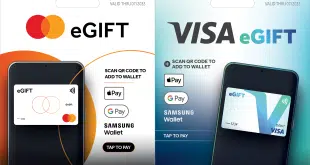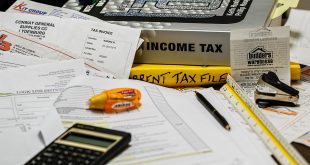The buy now, pay later trend is one of the hottest in payments. But rising rates, higher inflation, and stiffer rivalry could cool things off.
Few trends in payments have been as explosive as instant credit online or at the point of sale, with no interest if the installments are made on time. Indeed, buy now, pay later—an old idea in shiny new trappings—lifted off the launch pad when Covid hit and soon soared beyond the stratosphere. Good news for companies like Affirm Inc., Block Inc., Klarna AB, and PayPal Holdings Inc., right?
Not so fast.
The party isn’t over yet, but experts are pointing to recent trends that could put a damper on the proceedings sooner than most are expecting. Intense competition, rising inflation, and a notably higher cost of funds are likely to challenge all but the most prepared providers, they say.
The latest bad omen emerged last month when the Federal Reserve hiked its benchmark federal funds rate by three-quarters of a percentage point—the biggest increase in 28 years. “BNPL became popular during Covid when money was free. It’s not free any more,” says Marwan Forzley, chief executive of the payments company Veem Inc., which is trialing a BNPL product for business-to-business transactions.
Some sources put the number of BNPL providers operating globally at 108, and counting. And now players must reckon with the likes of Apple Inc., which launched its Apple Pay Later service last month (box, page 40). “Apple’s BNPL is going to upend the market,” predicts Ron Shevlin, chief research officer at Cornerstone Advisors.
Watch for consolidation, some say, as weaker players get swallowed up. “It’ll happen very soon,” predicts Brian Shniderman, U.S. chief executive for OPY USA Inc., a unit of Australia-based BNPL player OpenPay Pty. Ltd., which is leading a charge into big-ticket markets like home-improvement and health care.
A Limiting Factor
Already, companies have had to make painful adjustments. Sweden-based Klarna, long a stalwart in this business with a major U.S. presence, shocked the payments industry this spring when it said it lost $748 million last year. In May it announced it would lay off 10% of its 6.500 employees as part of a cost-chopping campaign.
Shares of at least some of the publicly held providers have been diving as investors reckon with adverse trends. Affirm’s stock plunged from $168 to $16 in the seven months from November to June, despite a generally strong record of attracting merchants and coaxing more transactions out of each user.
Investors are factoring in headwinds other than more-expensive money, an Affirm spokesman insists. “Most of our funding is off-balance sheet and we generally have multi-year bilateral agreements with our wholesale loan buyers,” he says.
What are some of those adverse trends? For one thing, Open Pay’s Shniderman argues too many players have targeted small-ticket transactions that can’t support the cost of the infrastructure needed to process them.
These may be the tickets that work best with the six-week, pay-in-four-installments, zero-interest plan BNPL is best known for, but there’s a limiting factor. “You have to have massive scale if you’re financing T-shirts and tennis shoes,” Shniderman says.
With inflation driving average tickets higher in these stores, this proposition becomes even harder to support, he argues, as defaults climb. “People are going to see a doubling or more in their loss rates,” he predicts.
Inflation in May stood at 8.6%, according to the Bureau of Labor Statistics, its highest rate since 1981, before at least half of today’s consumers—and payments executives— were born. “People haven’t seen this before,” says Veem’s Forzley.
‘A Longer-Term View’
Instead, Shniderman argues, the way forward is to concentrate on such things as big-ticket surgeries or a new roof for the house—at fixed rates over longer terms. “Consumers are more than ever going to demand fixed-rate products. If I can lock in a rate, and know it’s not going to get worse, I can go ahead and get that surgery,” he says.
Smaller tickets also lend themselves to fraud attacks, since the it’s hard for stores to justify the cost of full-scale fraud reviews, argues Shmuli Goldberg, chief marketing officer for Identiq Protocol Ltd. Fraud attempts on BNPL transactions last year grew 66% in the U.S. market, he says.
But by its nature the BNPL process must be fast and easy for the consumer, ruling out conventional fraud checks. “BNPL works because it’s a very lightweight process—a couple of clicks and you can get that short-term loan,” Goldberg says.
But merchants eschew tougher fraud checks because they can discourage transactions. To solve the problem, Identiq has built an information-sharing utility that verifies a user’s identity without exposing data and without Identiq serving as a middleman. “We rely on the consensus of the crowd, which can give an answer in under two seconds,” Goldberg says.
Now, on top of fraud, inflation, rising rates, and the sorrows of low tickets, BNPL players must contend with Apple, a master marketer selling high-end products to a devoted customer base. No one will be so rash as to predict who will survive, and who will end up on the sidelines or part of a larger entity. But many are those who foresee upheaval.
The answer to all of this is patience, say observers like Cornerstone’s Shevlin. The firms that will succeed, he predicts, are those that specialize in a vertical market, such as home improvement, and that use BNPL as a steppingstone to a high- profit credit card or line of credit. “Losses are increasing, and stocks are taking a beating, but you have to take a longer-term view,”
he advises.
Apple Self-Funds Because…It’s Apple
When Apple Inc. last month announced Apple Pay Later, its buy now, pay later program, the computing giant added an unexpected twist: The new product will not rely for financing on Goldman Sachs, Apple’s long-time partner for Apple Pay.
Instead, Apple is setting up its own unit, to be called Apple Financing LLC. The credit can be used anywhere, but as Apple’s product line consists of high-end computers, mobile devices, and other big-ticket gear, some observers are wondering about the risk the company may be taking on.
“There’s no question Apple has a lot of cash on hand,” observes Brian Riley, director of the credit advisory service at Marlborough, Mass.-based consultancy Mercator Advisory Group. “But a $1,200 phone will rack up a loan of $600 a month on pay in four. It will be a test of customers’ ability to repay.”
Pay in four is the typical BNPL model in which users get immediate access to their merchandise and then repay the loan in four installments over a six-week period, usually at no interest.
Estimates vary regarding the typical, or average, loan on BNPL. Data from the computing company Salesforce pegs it at $149. But some observers argue it’s higher. “It’s probably around $200,” says Sheridan Trent, a senior research analyst at The Strawhecker Group, an Omaha, Neb.-based payments consultancy.
She figures Apple will user various tactics to control risk with Apple Pay Later purchases, including transaction limits. “I’m assuming they’re going to put a cap on the amount you can borrow,” she says. Apple did not respond to a request for comment. Like other BNPL services, Apple Pay Later will split the four payments over six weeks.
The company’s ultimate strategy in introducing a BNPL option and financing it through its own subsidiary remains unclear, but there are hints. The option offers greater control over the product in ways that could offset the risk of defaults for Apple, which has said it wants closer control of consumer data flowing from BNPL transactions.
But there are tradeoffs. “On the one hand, the decision to reduce the role of Goldman Sachs in order to preserve the privacy of consumers is laudable. But the choice could also be risky given significant losses reported by Klarna, Zip, and Affirm this year from consumers’ missed payments,” Trent notes, referring to rival BNPL providers.
She agrees it’s likely Apple will want to extend credit more generally than for Apple products once it gets the new subsidiary established. That move would likely be facilitated by Apple’s existing link to Goldman and its connection to the Mastercard network.
But the move could also bring Apple into direct competition with established BNPL providers, leading to more loans at higher levels and bringing on higher risk.
“There are still a number of unknowns here,” says Trent. “Whether Apple [for example] will start offering longer-term financing options as some buy now, pay later firms currently do.”
But to begin with, it remains uncertain how Apple’s current customer base will receive the new service, she says, “as some buy now pay later companies are viewed with suspicion by consumers.”





